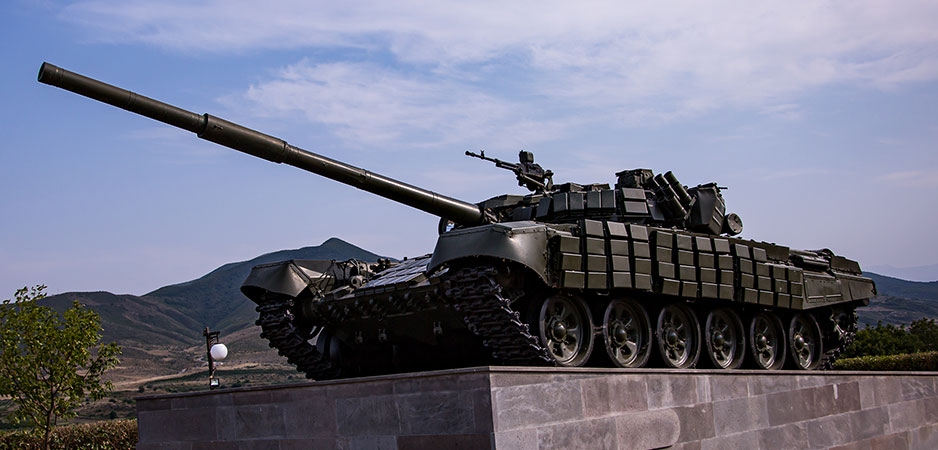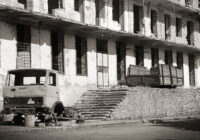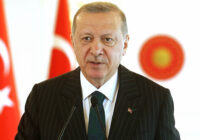The on-again, off-again conflict between Armenia and Azerbaijan over the border region of Nagorno-Karabakh became hot again on the weekend of July 11. Skirmishes are common in the contested region, which is known as Artsakh to the Armenian side, but this recent round of deadly attacks is the most serious escalation since the Four Day War in 2016 and is outside the typical point of contact. As usual, international calls for restraint and a diplomatic solution have been voiced, but internal politics between the two sides continue to amplify their serious disagreements. It seems as though the situation will continue to escalate, but the current circumstances are unlikely to spark a full-scale confrontation.
As in the case of other post-Soviet frozen conflicts — as well as land disputes in the North Caucasus — the dispute over Nagorno-Karabakh is intrinsically linked to the early history of the 20th century. Shifts of power resultant from the loss of the Ottoman Empire in World War I, the collapse of the Russian Empire and the territorial delineations configured in the formative days of the Soviet Union and its subsequent break-up created borders that did not appease all sides of the local populations. Nagorno-Karabakh has an ethnic Armenian majority, but political maneuvering in the 1920s handed its jurisdiction, and thus international recognition, to Azerbaijan. Armenia continued to voice its discontent over this arrangement, but matters of borders and ethnicity remained contained while the territories were part of a wider empire with one central government.
As the Soviet Union neared its end, the question of Nagorno-Karabakh reemerged as Karabakh Armenians sought the reconnection of the territory with Armenia proper. Subsequent political actions, including an unofficial referendum and a petition to the Supreme Soviet of the USSR to sanction the territorial transfer, infuriated the Azeri public. In 1988, the Nagorno-Karabakh War officially broke out just as inter-ethnic relations deteriorated, killing between 20,000 and 30,000 people. A further referendum in 1991, boycotted by Azerbaijan, quashed the prior plea to join Armenia in favor of the pursuit of independence for Nagorno-Karabakh. Fighting escalated to the point that both Armenia and Azerbaijan accused each other of ethnic cleansing. It was at this point that the international community turned its attention to the regional conflict in the South Caucasus.
Contemporary Crisis
In 1994, the Russian Federation mediated a ceasefire between Armenia, Azerbaijan and the Republic of Nagorno-Karabakh (as of 2017, officially the Republic of Artsakh). For the most part, this agreement has kept hostilities contained, minus the ongoing instances of low-level clashes and explicit violations by both sides. For example, the Four Day War in April 2016 witnessed Azerbaijan regain “two strategic hills, a village, and a total of about 2,000 hectares.” Nonetheless, Armenia has not fulfilled concessions required by UN Security Council resolutions, such as the withdrawal of its troops, leaving Azerbaijan perpetually frustrated.
There has been a continued push for engagement and peace talks by the international community, primarily the Organization for Security and Co-Operation in Europe’s (OSCE) Minsk Group, chaired by Russia, France and the United States, since 1992. Still, there are no official relations between Armenia and Azerbaijan as a result, and it has been difficult to breathe life into peace talks in a decades-long conflict.
It is unclear what exactly sparked the current round of hostilities between Armenia and Azerbaijan, but both sides blame the other for the escalation. The heightened tensions came only days after Azerbaijan’s president, Ilham Aliyev, declared that peace talks to resolve the conflict had essentially have stalled. One key difference between the current situation and those in the past is that the deadly encounter between forces did not occur directly in Nagorno-Karabakh, but rather in the northern Tavush section of the Armenian border.
On July 12, the Defense Ministry of Azerbaijan announced that Armenia launched an offensive that consequently killed two Azerbaijani servicemen and left five others wounded. In retaliation, Azeri forces launched a counterstrike, setting the scene for yet another protracted spat. Attacks have continued almost on a daily basis since the outbreak of the current impasse, and there have been numerous reports of shelling, tank movements and the use of combat unmanned aerial vehicles and grenade launchers.
While actions on the ground may be dramatic, they remain at a low level. On the other hand, authorities in Armenia and Azerbaijan up the ante through heightened threats and verbal tit-for-tats. This is typical of ethnic spats that rely heavily on nationalist rhetoric to amplify cohesive public support for military actions, whether offensive or defensive. In a case of a highly provocative statement that should raise eyebrows, the head of Azerbaijan’s Ministry of Defense press service stated that “The Armenian side should not forget that the latest missile systems, which are in service with our army, allow hitting the Metsamor Nuclear Power Plant with high precision, which can lead to a huge catastrophe for Armenia.”
A retort by the Armenian Ministry of Foreign Affairs noted that such possible violations of international law are “an explicit demonstration of state terrorism and genocidal intent of Azerbaijan” as well as “leadership of Azerbaijan acts as a menace to all the peoples of the region, including its own people.”
Too Late for Diplomacy?
After 30 years of a tense and barely tolerated relationship, it seems unlikely that any political or diplomatic solution will result from this latest round of tensions. Indeed, a significant diplomatic effort has been expended to resolve the Nagorno-Karabakh conflict and wider disputes between Armenia and Azerbaijan to no avail. At this time, it is simply enough that the sides generally adhere to the 1994 ceasefire and engage with the Minsk Group. For instance, the OSCE institution released a press statement that the belligerents of the conflict must “resume substantive negotiations as soon as possible and emphasize the importance of returning OSCE monitors to the region as soon as circumstances allow.”
International voices have all chimed in and called for restraint by both Armenia and Azerbaijan. Besides being a co-chair for the Minsk Group, Russia is understandably concerned about the clashes in its neighborhood. Deputy Foreign Minister Andrey Rudenko reiterated sentiments similar to the OSCE, calling on “both parties to immediately ceasefire and start negotiations in order to prevent a recurrence of these incidents.” On the other hand, Turkey’s Foreign Minister Mevlut Cavusoglu called on Armenia to “pull its head together” and subsequently expressed that “Whatever solution Baku prefers for the occupied lands and Karabakh, we will stand by Azerbaijan.”
The Ministry of Foreign Affairs of the Republic of Artsakh consequently slammed the Turkish position, condemned the destabilizing actions of Azerbaijan in the Tavush region, and echoed the need to return to the OSCE table. With numerous political actors and geopolitical interests at play, the fight over such a small but strategically important swathe of land becomes much more complex once compounded by the factors of ethnicity, history and national pride.
But it seems unlikely that the current situation will transition into another full-scale war. Rather, it is fair to assume that actions on the ground could escalate for the short term, but any protracted operation would be a serious regional blow to civilian populations and the energy sector. The Nagorno-Karabakh War of 1988-1994 displaced some 860,000 on both sides, and a similar outcome is possible today, with skirmishes occurring in populated areas.
Secondly, the Armenia-Azerbaijan borderlands are important transit points for oil and gas pipelines. Entities and media that follow energy markets have already raised concerns over the current fighting and how it may influence the flow of hydrocarbons. The ongoing situation around Tavush province is certainly more serious because it is closer to the South Caucasian Pipeline (SCP) that runs from the Azeri capital Baku to Tbilisi, Georgia, and then Erzurum, in Turkey. Furthermore, the SCP is part of the wider Trans-Anatolian Natural Gas Pipeline (TANAP) and Trans Adriatic Pipeline (TAP) — a network set to deliver gas to Europe upon completion later this year. These factors will obviously be taken into consideration by Azerbaijan’s strategists as they move forward with their plans in the region. It would be short-sighted to destabilize this network when diplomatic options are at hand to at least keep the status quo for the sake of business.
Additionally, the South Caucasus is a busy neighborhood, geopolitically speaking. In the case that the situation escalates and interests are at risk, one could expect greater involvement from Russia and Turkey. Although the Turkish Foreign Ministry gave a statement in strong support of Baku, it does not mean that Ankara would be willing to send forces. Moscow has little taste for engagement in a military operation either. Further, even the Collective Security Treaty Organization (CSTO) — a military alliance composed of countries from the Commonwealth of Independent States, including Armenia and Russia — promote a political solution rather than a military one. The international community and organizations openly promote a return to the Minsk Group’s negotiation table and, ideally, this will be the immediate result of the ongoing skirmishes.
The clashes between Armenia and Azerbaijan are likely to continue in the short term just as their non-existent diplomatic relations will endure without the political will for an inclusive political solution. Tavush province has taken the spotlight between the foes right now, but the recent occurrences are being widely viewed as the greater Nagorno-Karabakh conflict due to the proximity and the historical antagonism over the border. While it is unfortunate that cross-border shelling and conflict has attracted international interest to the South Caucasus yet again, it is not unexpected as matters never really settle to a level of peaceful monotony in the region.
The views expressed in this article are the author’s own and do not necessarily reflect Fair Observer’s editorial policy.
Support Fair Observer
We rely on your support for our independence, diversity and quality.
For more than 10 years, Fair Observer has been free, fair and independent. No billionaire owns us, no advertisers control us. We are a reader-supported nonprofit. Unlike many other publications, we keep our content free for readers regardless of where they live or whether they can afford to pay. We have no paywalls and no ads.
In the post-truth era of fake news, echo chambers and filter bubbles, we publish a plurality of perspectives from around the world. Anyone can publish with us, but everyone goes through a rigorous editorial process. So, you get fact-checked, well-reasoned content instead of noise.
We publish 2,500+ voices from 90+ countries. We also conduct education and training programs
on subjects ranging from digital media and journalism to writing and critical thinking. This
doesn’t come cheap. Servers, editors, trainers and web developers cost
money.
Please consider supporting us on a regular basis as a recurring donor or a
sustaining member.
Will you support FO’s journalism?
We rely on your support for our independence, diversity and quality.






